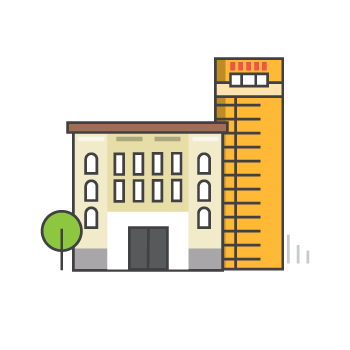Interview with Ciro Abath of Terrafuse, Aruba Glass and Ceramics
by Yello Nov 26, 2018

Ciro Abath is a sculptor who works with a variety of materials including ceramic, glass and bronze. He is the owner of Terrafuse, a multi-purpose space for workshops and design, which he shares with his wife Marian.
Ciro’s work, which deals in symbolism, history, myth and ephemera, has been called some of “the most complex of his generation in the insular Caribbean” by Cuban art critic and curator, José Manuel Noceda Fernández. His pieces can be found in prominent locations across Aruba, including the airport, Central Bank of Aruba and Plaza Padu.
Tell us about how you got started as an artist.
As a child, I was very curious about how things were made and designed, and how things develop in nature. I had a fascination with art and science. As an artist, you can research those aspects in many different ways. At 18, I moved to the Netherlands to study art, and I never stopped studying; I am still learning how to work with new materials to express ideas. I got a degree in Art Education focused ceramics and three dimensional designs, but I have taken intense courses on, and undertaken work-periods with bronze and glass.
Can you describe your design style?
Aruba’s nature and the Pre-Colombian past are a big source of inspiration for me; they are a point of departure in most projects. Depending on the idea, it will be a combination of materials. From four-metre high bronze works to small glass birds, silver and ceramic sculptures, nature and archeology can always be found in the resulting work.
What are your favourite materials to work with? How do you typically source these materials?

Groupsculpture by Ciro Abath (Bronze; Plaza Padu, Aruba). Photography by Cado de Lannoy, courtesy of Ciro and Marian Abath.
Bronze, glass and ceramics (culturally imbedded) are fire related materials that I work with mostly. I search for the combination or hybridization of materials, and combine them in different ways. Working with the materials experimentally gives me a boost. Combining materials in a way that they support the message are other aspects of the design. Materiality toward symbolism.
Sometimes, I use commercial clay ordered in the Netherlands or the US, and for special works I use local clay that I dig myself on several parts of the island.
What, or who inspires you? Do you have any favourite artists or design pieces?
Different artists. When I see how they use a material to create textures or skin, the directness in their use of materials, the research in their sketches. For instance, Leonardo da Vinci. His design drawings and way of doing research about nature and translating that into mechanical designs.
But also Panamarenko, a Belgium artist, and Theo Jansen, a Dutch artist that makes kinetic works.
Describe your work processes.
Everything starts with thoughts and sketches. Many times, I make a sample or a scale model that I adapt during the process. But there is always space for intuition during the process. Even in commissioned work, with limits in size, materials, and space, I use as much freedom as I can find. In my free work there are no limits in execution.
How does Aruba inspire your work? Are there any places in Aruba that are particularly inspiring for you?

Water and Wind by Ciro Abath (glass; Aruba Airport). Image courtesy of Ciro and Marian Abath.
The landscape, nature, undersea world, and climate are continuous sources of inspiration. The arid Aruban nature fascinates me and the evidence of Aruba’s past, archeological findings, intrigue me. I combine these forms in a symbolic way with my own ideas. I try to grasp a bit of the mystery of ‘the other side’, of the past.
Also focusing on the origin of the name Aruba – ‘Ora hubo’ or ‘There was gold’, which is still an open question with lot of inspiring visual entrances.
But also the huge rocks, the big boulders from volcanic activities that can be found all over the island. These silent witnesses of the past are there forever.
As an artist, what would you say has been your greatest success thus far?

Lady Justice by Ciro Abath (Bronze and glass; Oranjestad, Aruba). Image courtesy of Ciro and Marian Abath.
The word success does not mean much to me. It is not my focus. But I am absolutely pleased with the chances I have had during the last 10 years to create several bronze sculptures for public spaces in Aruba.
What is one challenge you face as an artist?
The organisational aspect is challenging. So too is the entrepreneurial part – website, contacts, financing, travelling; and to make sure to get all the materials and tools on board.
How have myths and cultural stories influenced your work? Are there any that are of particular interest to you?
I have always been curious about stories from the past. Finding archeological artefacts raises questions: who made this stone tool, what was this piece of ceramic part of (a pot perhaps?) and who was using it? These questions are the start of imagining the remote past, how people lived then and made sense of life with their creations. I try to give texture to that which is unseen, and to the mysterious powers of the universe.
Besides art, what do you enjoy doing in your spare time?
Being close to nature: working in the garden, enjoying the sounds and smells, listening to the birds and enjoying the company of the dogs. I also like to keep myself informed on the latest social and political developments of our neighbouring countries and the rest of the world.
What advice would you give to an individual who wants to follow in your footsteps?
Find the deeper layers. Question yourself. What fascinates you in your inner thoughts? Try to visualise that.
What’s next? Are there any projects in the pipeline that you’re excited to produce?
I would love to apply for an art residency, or do a work period in which I can work with other experts and combine different materials: an integration of glass, ceramics and bronze. And, to realise a sculpture garden with site-specific work in glass and ceramics.
For more on Ciro, visit Terrafuse’s website at https://www.terrafusearuba.com/. Stay tuned to FindYello.com, where we will also be sharing an interview with his wife, Marian Abath.








